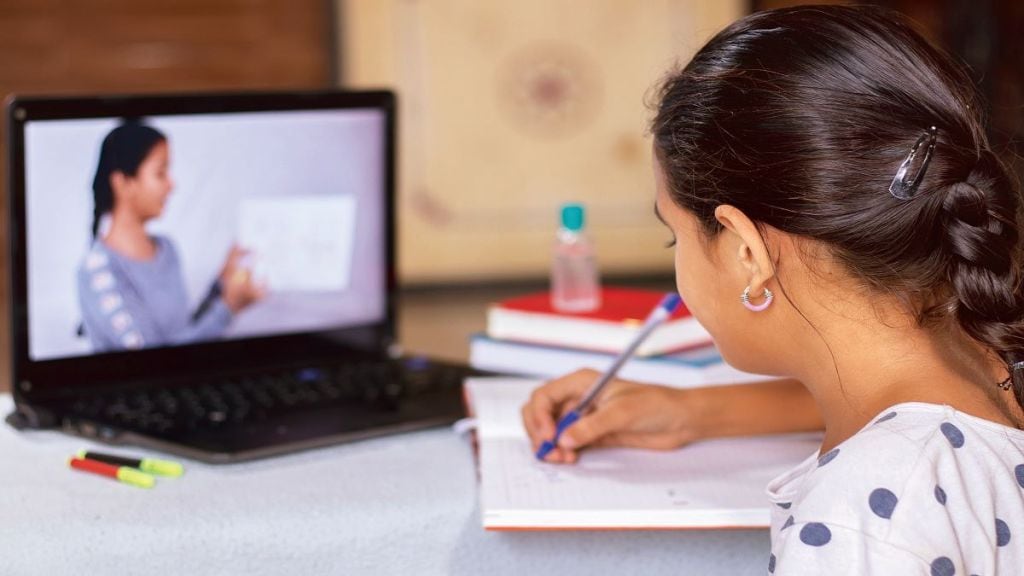By Shubhangi Shah
Among the many things that the devastating pandemic taught us is that technology is the way forward. Not just that, tech can enable anything that was unfathomable earlier. To counter social isolation, we resorted to video calls; as offices were shut, most of us worked from home. Not just that, due to the ban on public gatherings, many events, including weddings, were conducted online. As the physical world went out of reach for humankind, technology became the backbone. The same is true for the education sector. As schools were closed, virtual classes became a norm. Although the efficacy of these can be debated, the ability shown by the education sector in adapting calls for nothing short of applause.
And as everything opens up, a question lingers: are there any elements of online classes that we can carry ahead with us? Just think, when physical classes were disrupted, technology came to the rescue. With or without the pandemic, tens of thousands of students are forced to drop out of school every year. Financial constraints, schools in faraway places and domestic chores, especially in the case of adolescent girls, are among the primary reasons, as per the National Sample Survey of India (2015). The situation worsened further as Covid dealt an economic blow, as per numerous reports. In such a scenario, a technological alternative can be deliberated upon. Similarly, in several quarters of rural and semi-urban India, there is a lack of proper education, either due to the sub-standard quality or the absence of schools altogether.
Some organisations have come forward to address that. An edtech startup, Utkarsh Classes, launched what it calls a ‘Shiksha Rath’ this month in Rajasthan, which is a digital classroom on wheels, touted to provide a live digital learning experience to students in India’s small towns and villages. In the first phase, this chariot is travelling through Jodhpur, Jaisalmer and Barmer. The students will be able to learn from the educators when the ‘rath’ will visit their town or village.
The quality and efficacy of online education have often been questioned. And why not? Through peer-to-peer and teacher-student interactions, the child develops several soft skills. Also, participating in co-curricular events boosts confidence and skill. As this cannot be contested, physical classes become crucial during a child’s formative years. However, a hybrid model, later on, to provide them with greater flexibility might prevent some students from dropping out.
Instead of competing against one another, there is a way that online and offline classes can co-exist. Deliberations have been on for years upon the advantages of smart classes. Many schools have adopted these too. It’s an immersive experience that helps students understand the concept better instead of just mechanically mugging things up.
Recently, South Korean electronics giant Samsung launched its ‘Samsung Smart School’ programme at 10 Jawahar Navodaya Vidyalayas across the country. It aims at giving less-privileged students access to digital education. Such an initiative can contribute a great deal to aiding education.
Just like in schools, technology-aided flexibility can help college students too. A drawback of distance learning is the lack of interaction. In such a case, the Indian Institute of Management (IIM), Ahmedabad, has come up with a model. The premier institute offers an IIMA e-mode postgraduate programme and awards a Master of Management Studies degree under it. Just like the regular MBA course, it spans two years. However, the students have to attend physical classes for five weeks and can pursue the rest of the degree virtually. Such a model can help working professionals immensely, who will be able to pursue higher education without having to quit their jobs. Students not willing to relocate or those facing financial constraints can also benefit, as this one saves the relocation and other overhead expenses.
Just like anything, virtual classes have both advantages and disadvantages. A major drawback is the lack of interaction. But, instead of rejecting it altogether, we can ponder over ways to counter that. One such solution can be incorporating such sessions where students can actively interact with one another and with the teacher.
The world is rapidly moving towards digitisation. Although this doesn’t mean we have to lose touch with the physical world, resisting any change would solve no purpose, either. Online education has the potential to cater to a large section of students. Hence, the need is to fill in the gaps and improve the overall experience. Technology and innovation with the intent of growth and development can go a long way in improving lives. There are multiple examples of this across the world. Will the education sector become another such example, only time will tell.

